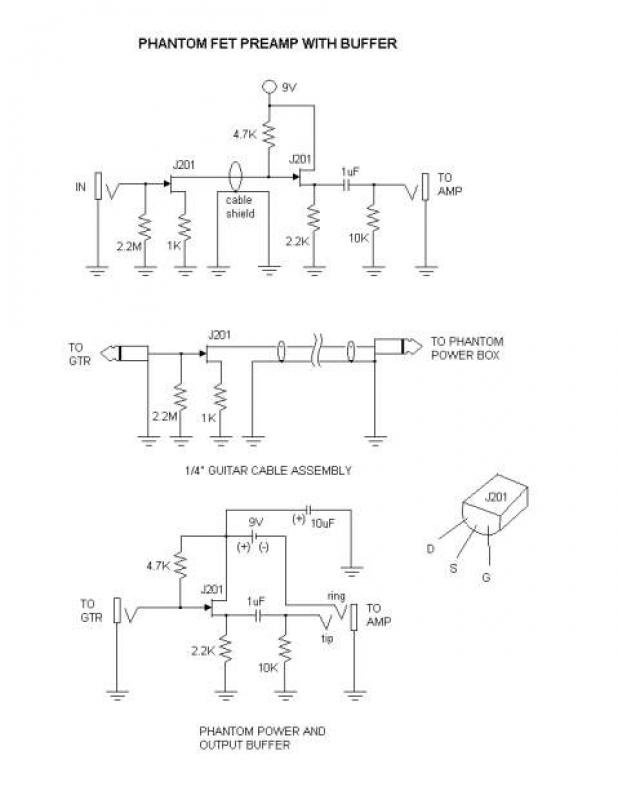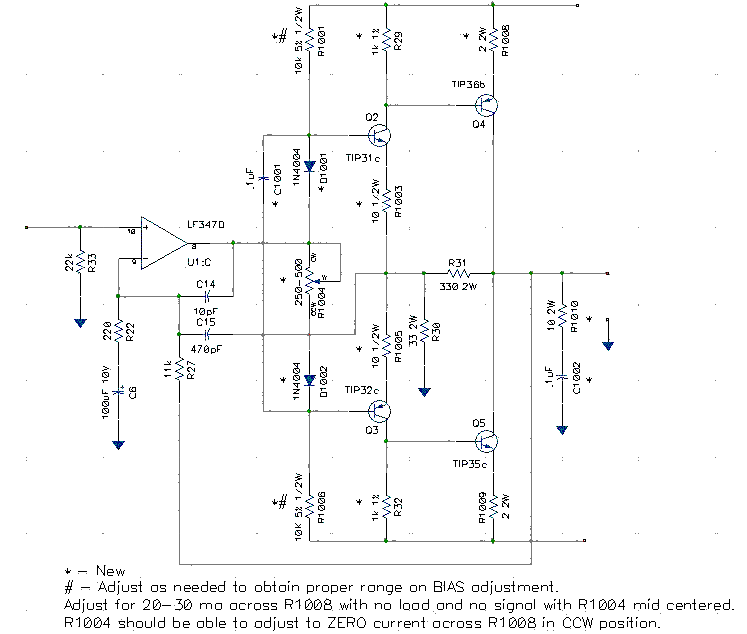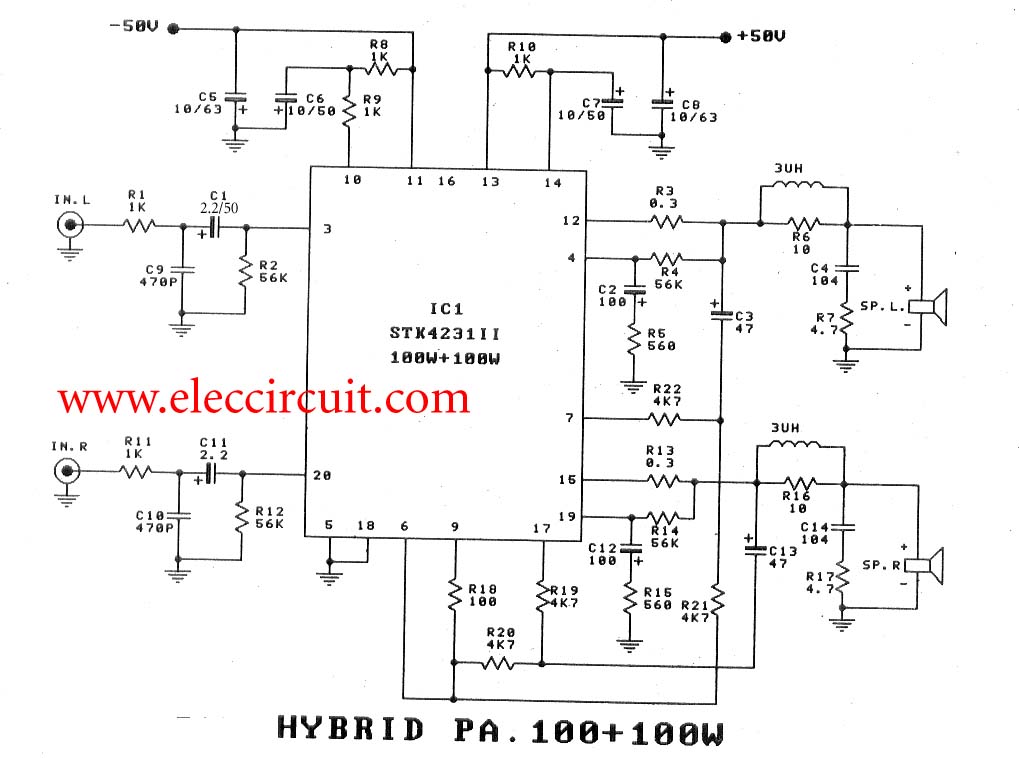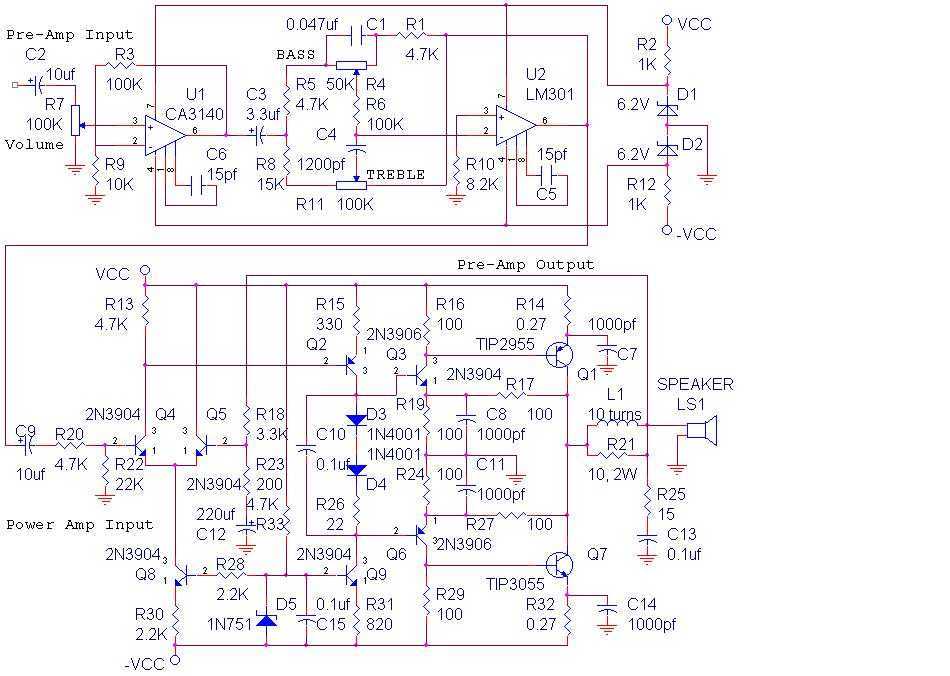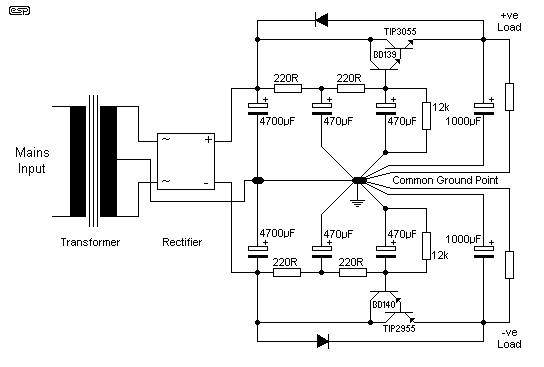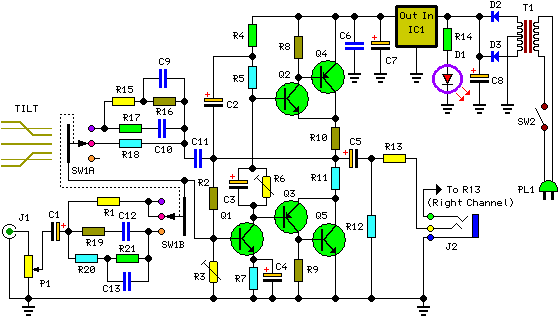
A Ph Probe Buffer Amplifier
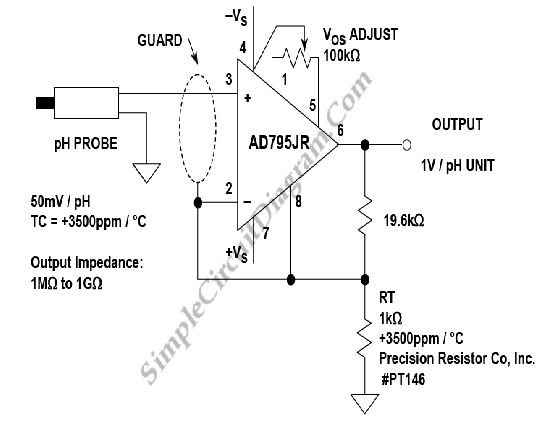
A buffer amplifier is necessary for a typical pH probe to isolate its source resistance, which ranges from 10^6 to 10^9 ohms, from the external circuitry. Such an amplifier is illustrated in the...
The buffer amplifier serves a critical role in interfacing high-impedance sensors, such as pH probes, with lower-impedance measurement devices or circuits. The high input impedance of the buffer amplifier ensures that the probe's output signal is not significantly affected by the load it drives. This characteristic is crucial when dealing with the delicate signals produced by pH sensors, which can be influenced by external factors if connected directly to measurement equipment.
The typical configuration of a buffer amplifier utilizes an operational amplifier (op-amp) in a voltage follower arrangement. In this setup, the output of the op-amp is connected directly to its inverting input, while the non-inverting input receives the signal from the pH probe. This configuration provides unity gain, meaning that the output voltage will be equal to the input voltage, effectively allowing the buffer to pass the signal without amplification or attenuation.
To ensure optimal performance, it is important to select an op-amp with a very high input impedance, low output impedance, and a wide bandwidth. This will help to maintain signal integrity and minimize any potential distortion or noise introduced by the amplifier. Additionally, power supply considerations should be taken into account to ensure that the op-amp operates within its specified voltage limits, which can vary depending on the specific application.
In practical applications, the buffer amplifier may also incorporate additional features such as filtering or gain adjustment, depending on the requirements of the measurement system. However, the primary function remains focused on isolation and impedance matching, providing a reliable interface between the pH probe and subsequent processing or display circuits.Buffer amplifier is required by a typical pH probe to isolate its 10^6 to 10^9 ohm source resistance from external circuitry. Such an amplifier is shown in the.. 🔗 External reference
The buffer amplifier serves a critical role in interfacing high-impedance sensors, such as pH probes, with lower-impedance measurement devices or circuits. The high input impedance of the buffer amplifier ensures that the probe's output signal is not significantly affected by the load it drives. This characteristic is crucial when dealing with the delicate signals produced by pH sensors, which can be influenced by external factors if connected directly to measurement equipment.
The typical configuration of a buffer amplifier utilizes an operational amplifier (op-amp) in a voltage follower arrangement. In this setup, the output of the op-amp is connected directly to its inverting input, while the non-inverting input receives the signal from the pH probe. This configuration provides unity gain, meaning that the output voltage will be equal to the input voltage, effectively allowing the buffer to pass the signal without amplification or attenuation.
To ensure optimal performance, it is important to select an op-amp with a very high input impedance, low output impedance, and a wide bandwidth. This will help to maintain signal integrity and minimize any potential distortion or noise introduced by the amplifier. Additionally, power supply considerations should be taken into account to ensure that the op-amp operates within its specified voltage limits, which can vary depending on the specific application.
In practical applications, the buffer amplifier may also incorporate additional features such as filtering or gain adjustment, depending on the requirements of the measurement system. However, the primary function remains focused on isolation and impedance matching, providing a reliable interface between the pH probe and subsequent processing or display circuits.Buffer amplifier is required by a typical pH probe to isolate its 10^6 to 10^9 ohm source resistance from external circuitry. Such an amplifier is shown in the.. 🔗 External reference
Warning: include(partials/cookie-banner.php): Failed to open stream: Permission denied in /var/www/html/nextgr/view-circuit.php on line 713
Warning: include(): Failed opening 'partials/cookie-banner.php' for inclusion (include_path='.:/usr/share/php') in /var/www/html/nextgr/view-circuit.php on line 713
